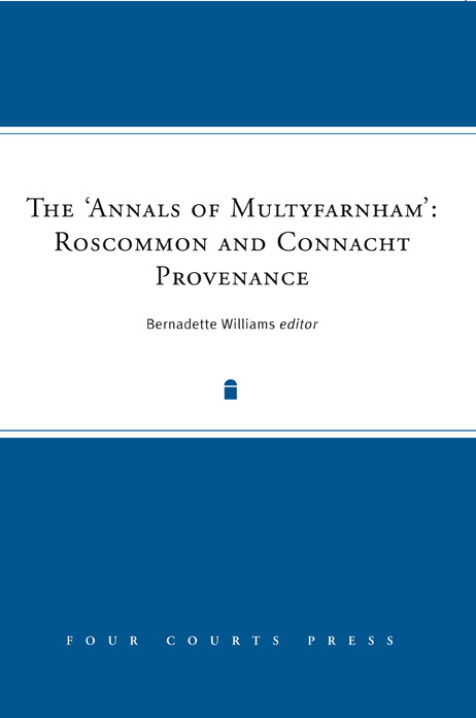The 'Annals of Multyfarnham'
Roscommon and Connacht Provenance
Bernadette Williams editor
Written in the late thirteenth century, the so-called ‘Annals of Multyfarnham’ are fascinating for many reasons. They were given their title in the seventeenth century, but the name has always been a matter of speculation. This new edition of the ‘Annals of Multyfarnham’ – the first for over 170 years – explores the reason why these annals were so named and suggests a Roscommon provenance. The original manuscript is very small (16 by 11cm), and is part of a manuscript volume of over 400 pages. It is a typical vade mecum, a small portable book, used by itinerant friars on their travels, that would easily fit into a satchel or a pocket.
The annals begin in AD45 and were written by Stephen de Exonia, who tells us that he was born in 1246 and entered the Franciscan order in 1263 when he was 17 years old. His personal contribution to the annals begins in 1261 and it is possible to determine, from internal evidence, that he was writing the annals during the years 1272 to 1274, when the annals cease. Roscommon or its close environs is the main focus of interest in the latter part of the annals, beginning in the late 1260s with the building of the king’s castle there and the establishment of the Franciscan house. These annals contain the only extant medieval reference to that friary, which was burnt in 1277. A Richard de Exonia was then in charge of Roscommon Castle, and the names of his three wives and the birth of his son are recorded. The Irish names in the annals reflect familiarity with Connacht and the military activity of Áed O’Connor, king of Connacht, whose death is recorded in 1274.
Bernadette Williams holds a PhD from Trinity College Dublin and is the author of The Annals of Ireland by Friar John Clyn (2007).

